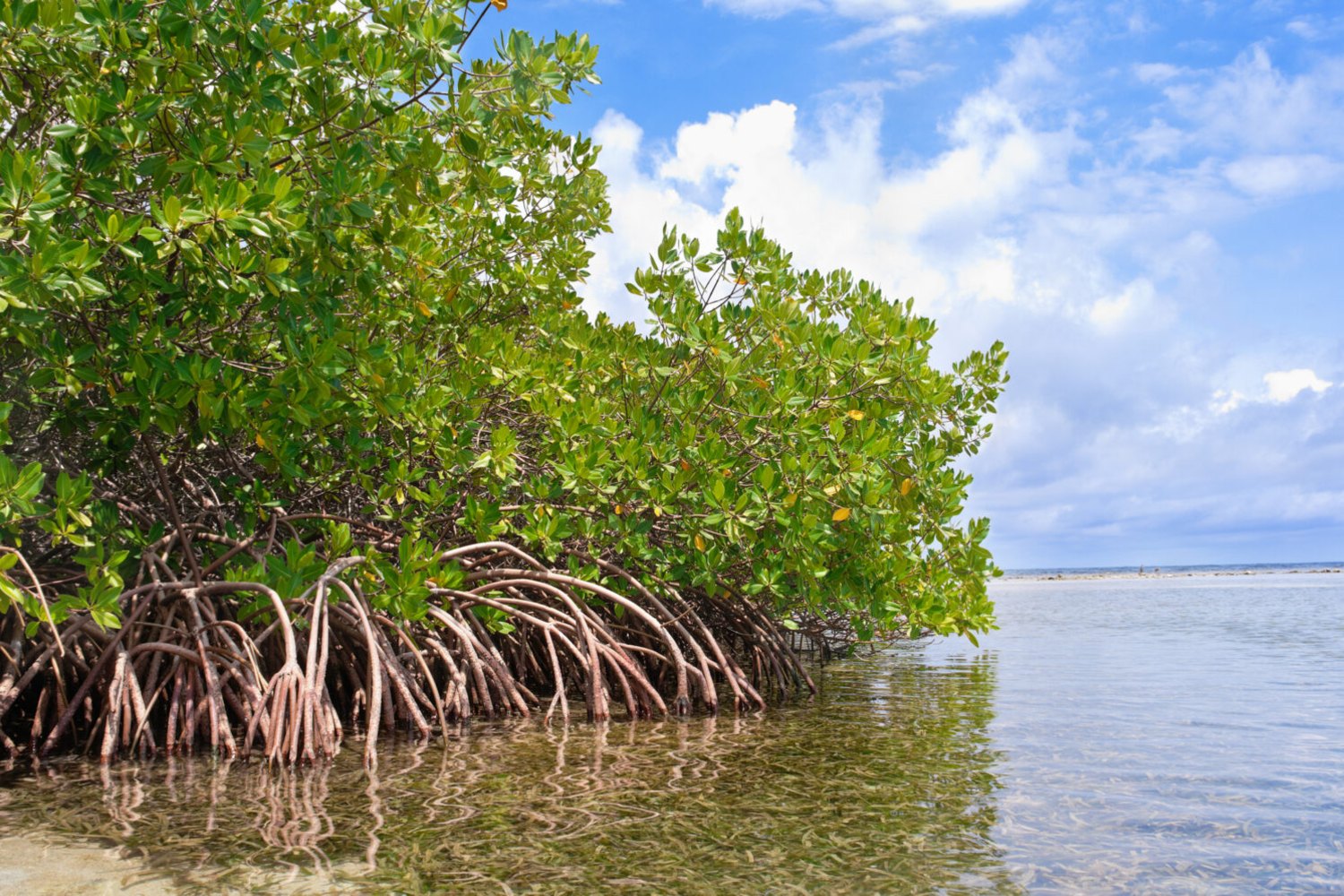- Mangroves are found in 123 nations worldwide and contribute immensely to the well-being, food security, and protection of coastal communities.
- They provide a crucial nursery habitat for fish and crustaceans, and their dense root systems help bind and build soils, serving as a natural defence against storms, tsunamis, rising sea levels, and erosion.
Mangroves, the unique forest cover separating land and sea in coastal regions, have been hailed for their profound benefits to humans and the environment. These resilient trees thrive in muddy, saline conditions that would overwhelm most other plant life.
Mangroves are found in 123 nations worldwide and contribute immensely to the well-being, food security, and protection of coastal communities. They provide a crucial nursery habitat for fish and crustaceans, and their dense root systems help bind and build soils, serving as a natural defence against storms, tsunamis, rising sea levels, and erosion.
Moreover, mangrove soils are highly effective carbon sinks, sequestering vast amounts of carbon and playing a vital role in mitigating climate change. To nearby populated areas, mangroves offer natural infrastructure, reducing erosion and absorbing the impacts of extreme weather events like hurricanes.
However, this invaluable ecosystem faces a concerning threat of extinction, disappearing three to five times faster than global forest losses. This alarming trend would have a severe ripple effect on the environment and the well-being of coastal populations.
In response, international bodies have taken action to raise awareness about the importance of conserving mangroves. The 2024 International Day for the Conservation of the Mangrove Ecosystem, themed "Raising Awareness about Mangroves and Their Importance as Self-Sustaining Ecosystems," highlights the urgency of protecting these vital natural resources.
Read More
UNESCO's Director-General, Audrey Azoulay, has emphasized the need to safeguard mangroves, noting that more than three-quarters of the world's mangroves are under threat. She said that UNESCO is actively working to protect mangroves and other blue carbon ecosystems.
“It has been estimated that more than three-quarters of the world’s mangroves are under threat along with all the aquatic and terrestrial organisms that depend on them. For this reason, UNESCO is acting to protect them and other valuable blue carbon ecosystems, through its networks of Biosphere Reserves, Global Geoparks and natural World Heritage sites,” she said in a statement.
She also noted that UNESCO has been supporting the growth of floating mangroves while conducting research on their carbon sequestration capacities at Lusail Marina in Qatar.
“Beyond protection and restoration, we also need global awareness. This is the spirit of the first International Conference on Mangrove Conservation and Restoration taking place in Abu Dhabi from 10-12 December this year, in which UNESCO is a partner. By raising awareness of the mysteries of mangroves, we can better preserve them,” she added.


-1768983522.png)
-1768824505.jpg)



